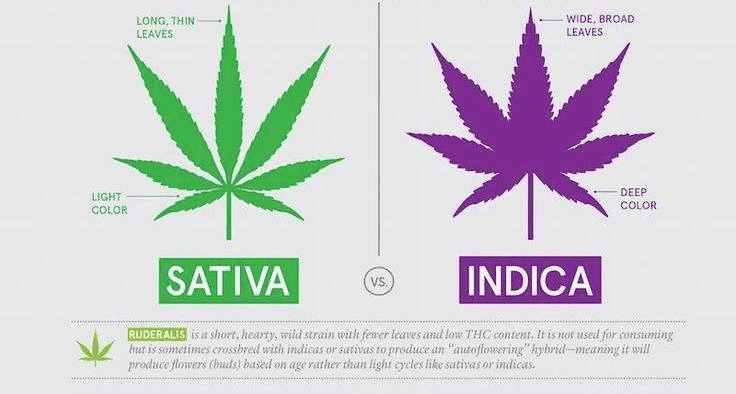
Beyond Indica & Sativa
With the explosion of new Indica and Sativa strains hitting the marijuana market every year, patients and other cannabis consumers often feel a little lost looking at the menu. How, for example, is Platinum Kush different than Golden Goat or Super Silver Haze? Or, for that matter, what is the difference between Sour OG, Lemon OG, Tahoe OG and SFV OG? Unless the budtender behind the bar happens to be exceptionally knowledgeable, patients are left simply to guess.
In a regulated market, this would never have happened. Modern supply chains in the licit economy use standards – discrete units of congruency – to fastidiously track every widget and to ensure that every actor, from producer to consumer, always knows what she is getting. Starbucks, for example, sources coffee beans from farmers spread across four continents, tracking every shipment according to its Coffee and Farmer Equity (CAFE) standards, which includes metrics like whether the beans are Fair Trade and Organic (both defined standards in and of themselves), whether the workers who harvested them are treated well (again, according to precisely defined standards), and whether the beans were produced according to environmentally sound practices (ditto). In an astonishing feat of global supply chain logistics, Starbucks can now claim to have the ability to trace 94% of its coffee beans all the way back to the exact farm where they were produced. By comparison, the vague standards of ‘Indica’ and ‘Sativa’, combined with one-word descriptors of a famously ineffable high, point toward a Indica and Sativa cannabis industry with a lot of growing up to do. Marijuana labels are not meaningless, but they are rapidly losing all significance. Breeders, searching the globe for exotic strains, have crossed, crisscrossed and re-crossed indicas and sativas (and now ruralizes as well) with one another so many times that the old designations are rapidly getting lost in the shuffle. Strains marketed as ‘indica’, meaning “body high” or “Stoney” in the parlance of the cannabis industry, regularly deliver highs that provide the opposite effect. ‘Sativas’, meanwhile, can often put patients in “couchlock” – the opposite effect of the supposed “head high” advertised on the label. And this confusion is not to be wondered at when breeders have spent at least the last forty years selectively breeding for traits and caring not a whit for the plant’s original genetic lineage. The point is brought sharply home by the work of Dr. Jeffrey Raber, who holds a Ph.D. in chemistry from the University of Southern California and is the founder of the Werc Shop, a leading medical marijuana testing laboratory in Pasadena, California. Dr. Raber tested over 1,000 strains obtained from dispensaries throughout California, and in an interview with LA Weekly, he completely debunked the notion of any kind of consistency among strains. “Most people don’t even know,” Dr. Raber said. “We took a popular name, Jack Herer, and found that most [buds sold under that name] didn’t even look like each other. OG whatever, Kush whatever, and the marketing that goes along with it – it’s not really medically designed.” It gets worse. Dr. Raber’s data, which he says will be published soon, “shows that ‘Indica’ and ‘Sativa’ is just morphology. It’s a misperception that indica will put you to sleep or that Sativa is more energetic.” Dr. Raber’s assertions, if borne out by the data, spells big trouble for websites like Leafly, which recently sold for an undisclosed sum to private equity firm Privateer Holdings. According to the logic of the predominant pot nomenclature, Leafly is king; with thousands of strains listed and categorized by user reports, the slick-looking website has been called “the Yelp of weed.” By aggregating the responses of users and ranking strains based on those responses, Leafly aims to cut through Hemp consumers’ confusion and provide objective data on all new strains as they arrive. But how can all of that data be of any use to patients when, as Dr. Raber asserts, an OG Kush bought in one dispensary bears precious little resemblance to OG Kush bought at the dispensary next door? It gets even worse than that. Dr. Norman Zinberg, the author of the seminal Drug, Set, and Setting, explodes any idea that the effects of drug use are strictly deterministic – in other words, that two people with different life experiences will experience the same high from cannabis, even if they’re sharing the same joint. According to Dr. Zinberg, nothing could be further from the truth: while one person may feel giggly and content, the other may become edgy and paranoid. In fact, Zinberg provocatively asserts that the mindset and the physical setting of the drug user have effects equal to the drug itself when used, providing the basis for his book’s name. This means that even identical twins smoking identical weed may have vastly different drug experiences therefrom, provided that their minds are dwelling on separate subjects at the time or that their immediate setting may be different. One may say that the herb is uplifting and euphoric; the other may report its sedative effects. Same genetics. Same pot. Vastly different reactions.

The sum total of the findings of Dr. Raber and Dr. Zinberg means that the patient-reported data employed by Leafly and dispensaries nationwide is essentially bunk. To the extent that there is any consistency at all, such results are more likely the result of Zinberg’s observed power of the user’s mindset (i.e., if the user expects to get a creative boost because it says so on the label) than any kind of pharmacological congruency. Because such congruency does not exist (as shown by Dr. Raber) and because self-reported data is so unlikely to translate between subjects (as implied by the work of Dr. Zinberg), Leafly and nearly every marijuana outlet in the country is barking entirely up the wrong tree. There is a better way. Dr. Raber’s lab and others – notably Steep Hill Laboratory in Oakland – have already developed sophisticated techniques for testing cannabis for cannabinoid and terpene content, meaning that every gram of bud sold could potentially carry a label breaking down the entire drug experience with the most accurate data available. Cannabinoid content, and especially the ratio between THC and CBD, can be compared to gauge the bud’s potency; terpene profiles can be aggregated to predict flavor and smell. With complete information and a little experience, consumers can learn over time what works best for them, empowering themselves to make better decisions when trying new strains in the future. But unfortunately, state regulations are already headed in the wrong direction. Washington state, for example, has passed labeling rules providing woefully incomplete information, making it much more difficult for consumers there to make informed purchases.
A better system would set up ‘grades’ of cannabis according to potency and flavor, through a system similar to the way computer processors are ranked according to post-manufacture testing. Just as CPUs each come out of the factory a little different but can be ranked for speed according to stress tests, so can cannabis, with all its minute variations, be tested by laboratories after curing and ranked by brackets of potency. Terpene levels can also be standardized; machine-learning software can analyze the relative prevalence of each fragrance-producing chemical to rank buds by its fruity, piney and other scents.
When the cannabis industry adopts a common language across producers, processors, and retailers, the winners will be the consumers. Any person of legal age will be able to walk into a store or dispensary and easily compare the options without having to know the subtleties behind such obscure names as J1 or XJ-13. Consumers deserve such consideration; and the first company to deliver it to them stands to make a lot of money.
Subscribe To Our Magazine!
Get every issue of Psychedelic Magazine delivered straight to your inbox every month - for free! We do not spam!
You have subscribed successfully!
Some error occured
Please fill all the required * fields.








